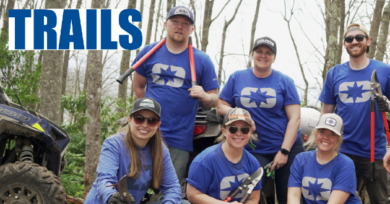Organization tackles disturbing increase in bike fatalities – April 24, 2006
Over the past seven years, the number of national motorcycle fatalities has increased 89 percent, according to the National Highway Traffic Safety Administration. Such statistics are why organizations such as the NHTSA exist: to find ways to reduce those numbers and ensure that motorcyclists are riding safely.
The organization researches a number of aspects that can affect motorcycle safety, including rider training, licensing, helmets and protective gear, other motor vehicle driver awareness and riding while impaired. NHTSA’s Diane Wigle, chief safety countermeasures division, and Maria Vegega, chief behavioral research division, spoke on these aspects during a keynote address at the 2006 International Motorcycle Safety Conference in Long Beach, Calif., in March.
One of the aspects NHTSA is currently researching is rider impairment. While all states have set the legal blood-alcohol content level at .08, NHTSA is trying to determine if motorcycle riders are too impaired before that mark to drive. Wigle and others are trying to develop a program to teach people how to effectively stop friends from riding impaired.
NHTSA also is doing a crash causation study on daytime operating headlights. The organization is looking into whether the lights, part of many new model cars and trucks and already standard on motorcycles, make drivers better able to see motorcyclists. The results of the research will be published in the next three months.
In this, or any study NHTSA conducts, researchers will analyze the results and move forward with either developing and implementing educational programs or further research. For example, about 25 percent of those who die in motorcycle accidents aren’t properly licensed, Wigle said. So NHTSA is conducting research in Maryland, sending letters to people who register motorcycles with the state informing them that, as in any state, they need an endorsement on their driver’s license to ride. This endorsement is just like a notation on someone’s driver’s license saying he or she needs to wear glasses when they drive. If the study is successful in getting more people to become properly licensed, NHTSA will get the word out to other states that the method works.
If the study finds inconclusive results, researchers will look at alternatives and then test those.
For dealers, the first step to increased rider safety is to contact their state motorcycle safety administrator, Wigle said. The administrator puts on rider training courses and can help a dealer begin the first steps of increasing customers’ riding safety. Even after that first course, everyone should take an experienced rider course once a year, she added. Remembering to promote ongoing rider training can be as simple for dealers as asking customers if they’ve taken a rider course lately, whenever they stop in the store, Wigle said.
“I’m guessing that dealers have contact with their customers at least once a year,” Wigle said. “At minimum, (saying something) is a reminder to customers to have some refresher training.”
While training for all riders is important, Wigle has found reaching out to baby boomer riders is especially critical. Many baby boomers may have ridden motorcycles when they were young, but quit. Twenty to 30 years later, if they pick up riding in retirement, they may not be aware of how things have changed, which is a “serious problem,” Wigle said. Not only have motorcycles become larger, but the baby boomers have gotten older and lost some of the agility and perception they had when they were younger.
Dealers can hold training courses in their stores or in association with local rider groups. Rider organizations can do a lot to get the safety word out for dealers, Wigle said. The Motorcycle Safety Foundation offers training courses at dealerships, colleges and other locations throughout the United States.
The foundation is sponsored by BMW, Ducati, Harley-Davidson, Honda, Kawasaki, KTM, Piaggio/Vespa, Suzuki, Triumph, Victory and Yamaha.
“Most manufacturers offer a lot of support to dealers for safety programs,” Wigle said.
Dealers play an important role in developing a rider’s attitude toward safety, whether they know it or not, Wigle said, and she hopes they tell their customers the things she would like to tell them.
“They have direct contact with customers and I don’t,” Wigle said.
“They need to make sure their customers are informed.”




